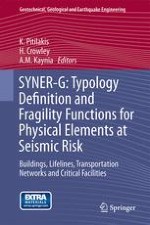Fragility functions constitute an emerging tool for the probabilistic seismic risk assessment of buildings, infrastructures and lifeline systems. The work presented in this book is a partial product of a European Union funded research project SYNER-G (FP7 Theme 6: Environment) where existing knowledge has been reviewed in order to extract the most appropriate fragility functions for the vulnerability analysis and loss estimation of the majority of structures and civil works exposed to earthquake hazard. Results of other relevant European projects and international initiatives are also incorporated in the book. In several cases new fragility and vulnerability functions have been developed in order to better represent the specific characteristics of European elements at risk. Several European and non-European institutes and Universities collaborated efficiently to capitalize upon existing knowledge. State-of-the-art methods are described, existing fragility curves are reviewed and, where necessary, new ones are proposed for buildings, lifelines, transportation infrastructures as well as for utilities and critical facilities. Taxonomy and typology definitions are synthesized and the treatment of related uncertainties is discussed.
A fragility function manager tool and fragility functions in electronic form are provided on extras.springer.com.
Audience
The book aims to be a standard reference on the fragility functions to be used for the seismic vulnerability and probabilistic risk assessment of the most important elements at risk. It is of particular interest to earthquake engineers, scientists and researchers working in the field of earthquake risk assessment, as well as the insurance industry, civil protection and emergency management agencies.
